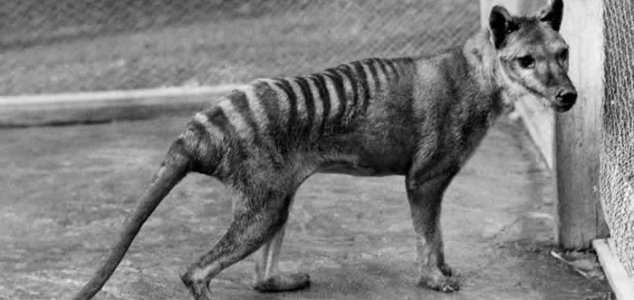Creatures, Myths & Legends
November 21, 2020 · 33 comments
33 comments

Could there still be thylacines alive in the wilds of Australia ? Image Credit: Benjamin A. Sheppard
Sporadic reports of alleged thylacines in the wild however have continued even to the present day, leading many researchers to believe that the species has managed to survive against all odds.
Conclusively proving this however has long proven to be a major challenge.
Now though, thylacine researcher Michael Moss has enlisted the services of EnviroDNA - a firm which analyzes environmental DNA (eDNA) to determine which species are living in any given area.
Such DNA traces may be found in skin cells, hairs and saliva that animals leave behind. By taking samples of the soil in a given area, the DNA of each species can be identified.
Now the team at EnviroDNA has used an analysis of the DNA from a preserved thylacine pup to expand its species library to include the Tasmanian tiger.
If a positive match can be found, it would suggest that there are still living thylacines roaming around.
So far the test has only been done on a preserved thylacine hair, however it should be possible to start analyzing general samples for signs of the species in the near future.
It will certainly be interesting to see what, if anything, the team finds.
Source: EnviroDNA | Comments (33)
Firm develops Tasmanian tiger DNA detector
By T.K. RandallNovember 21, 2020 ·
 33 comments
33 comments
Could there still be thylacines alive in the wilds of Australia ? Image Credit: Benjamin A. Sheppard
A genetic science company in Australia has developed a way to detect the presence of thylacines out in the wild.
Officially thought to have gone extinct decades ago, the thylacine (or Tasmanian tiger) was a distinctive carnivorous marsupial native to Australia, Tasmania and New Guinea.Sporadic reports of alleged thylacines in the wild however have continued even to the present day, leading many researchers to believe that the species has managed to survive against all odds.
Conclusively proving this however has long proven to be a major challenge.
Now though, thylacine researcher Michael Moss has enlisted the services of EnviroDNA - a firm which analyzes environmental DNA (eDNA) to determine which species are living in any given area.
Now the team at EnviroDNA has used an analysis of the DNA from a preserved thylacine pup to expand its species library to include the Tasmanian tiger.
If a positive match can be found, it would suggest that there are still living thylacines roaming around.
So far the test has only been done on a preserved thylacine hair, however it should be possible to start analyzing general samples for signs of the species in the near future.
It will certainly be interesting to see what, if anything, the team finds.
Source: EnviroDNA | Comments (33)

The Unexplained Mysteries
Book of Weird News
AVAILABLE NOW
Take a walk on the weird side with this compilation of some of the weirdest stories ever to grace the pages of a newspaper.
Click here to learn more

Support us on Patreon
BONUS CONTENTFor less than the cost of a cup of coffee, you can gain access to a wide range of exclusive perks including our popular 'Lost Ghost Stories' series.
Click here to learn more
Israel, Palestine and the Middle-East
Ancient Mysteries and Alternative History
United States and the Americas
Spirituality, Religion and Beliefs
Total Posts: 7,768,109 Topics: 325,017 Members: 203,759
Not a member yet ? Click here to join - registration is free and only takes a moment!
Not a member yet ? Click here to join - registration is free and only takes a moment!
































Please Login or Register to post a comment.